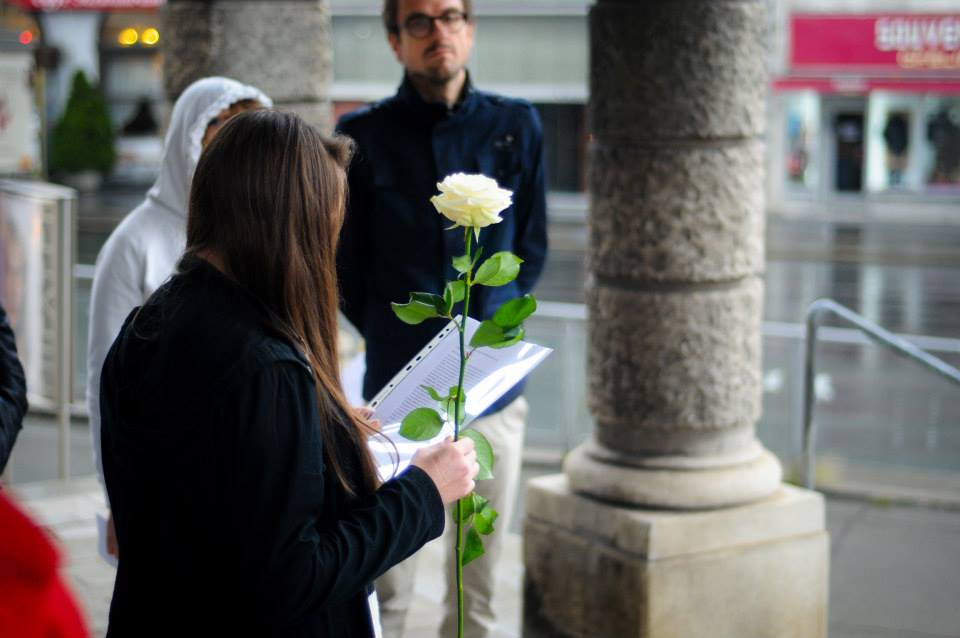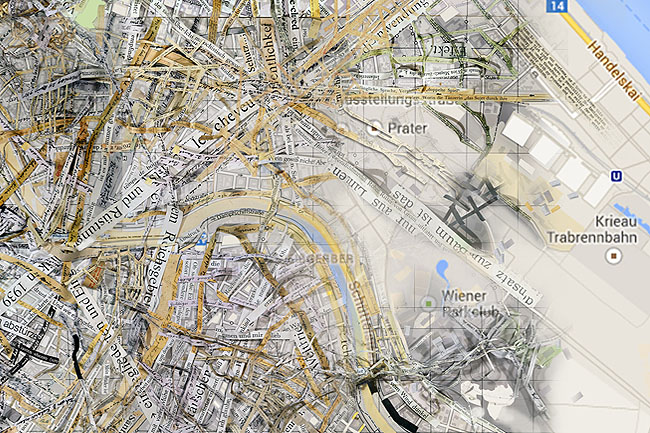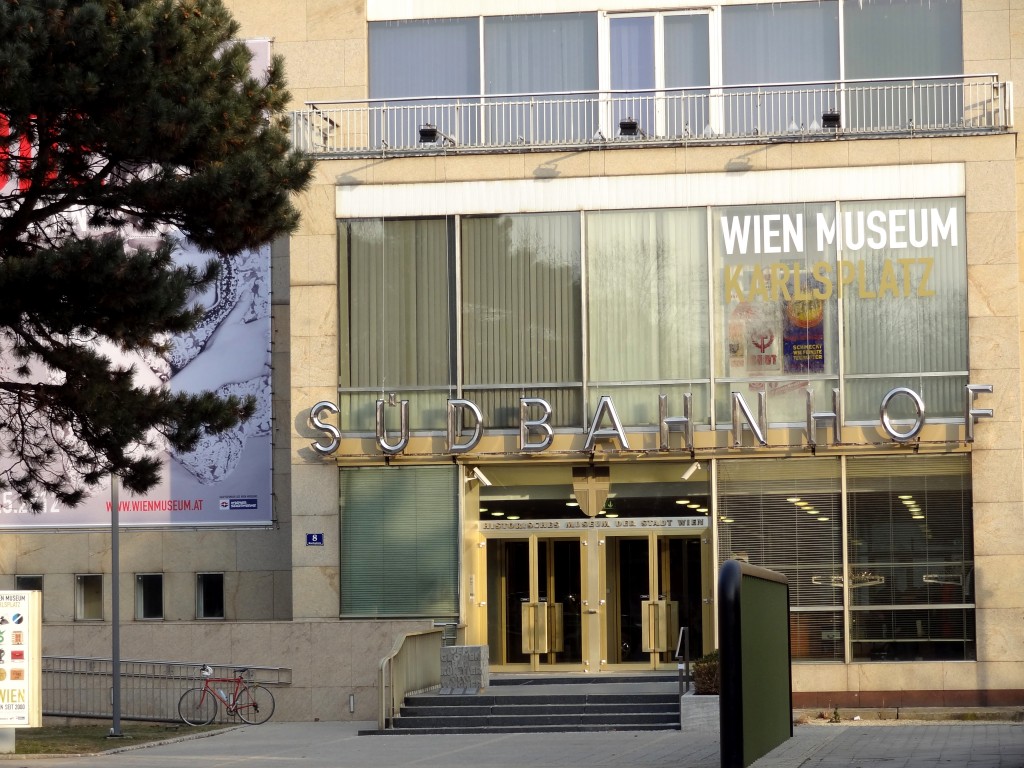Education
Public Reading of Archival Letters 2014 17.October 9:00-10:00
“Reading Marathon” flier flier auf Deutch
 Reading at Volkstheater Photo credit: Kabren Levinson
Reading at Volkstheater Photo credit: Kabren Levinson
Working in cooperation with 20 or more Austrian gymnasium and university classes, secondary school students and university students read archival letters, written by Austrian victims and survivors of National Socialism between 1938-1945, at 26 of the 38 memory sites. Letters, coming in from all over the world were distributed to participating teachers and professors in early October, to allow for planning and preparation with students.
Developed as a public performance, the readings took place from 9:00-10:00, the morning of 17. October. The “Reading Marathon” was synchronized to occur simultaneously in multiple districts, filling the city with the voices of memory for the duration of one hour. Some teachers prepared additional curriculum to deepen student awareness of this history.
“Wir waren mit etwa 25 Kindern unterwegs und haben den Weg vom WUK in die Seegasse zu Fuß zurückgelegt. Wir hatten einen alten Koffer dabei und wir trugen applizierte Judensterne auf unseren Jacken – als Provokation, als Denkanstoß, zur Erinnerung”–Fr Claudia Gerhartl
![IMG_0184[1]](http://theviennaproject.org/wp-content/uploads/2013/05/IMG_01841-1024x768.jpg) Reading letters at Heim für Mischehepaare/Seegasse Photo credit: Fr Gerhartl
Reading letters at Heim für Mischehepaare/Seegasse Photo credit: Fr Gerhartl
 Reading letters at Barankapark Photo credit: Johanna Taufner
Reading letters at Barankapark Photo credit: Johanna Taufner
Sonja Danner, on faculty at Kirchlich Pädagogische Hochschule KPH Wien/Krems where she trains teachers and oversees Holocaust education coordinated the “Reading Marathon” program. Margret Vince, a professional translator in the UK transcribed the letters. Marianne Windsperger, a doctoral candidate in Comparative Literature at the University of Vienna helped to organize the letters for teachers. Sonja matched letters with districts and districts with the 26 memory sites. She distributed letters to teachers who registered for the program. Participating teachers received the following material:
- 10 folders holding 10 letters, one letter per folder.
- The folders will also contain one cover sheet (with identifying information and content) for each letter
- Each folder will present: a Xerox copy of an original image of the letter, a typed transcription of the letter, and a translation of the letter (from German to English or English to German).
Organization
Karen Frostig, overall organization (AT/US)
Margret Vince, transcriber and translator (UK)
Brittain Smith, translator (US)
Barbara Merson, organzational assistance (US)
Marianne Windsperger, letter organization (AT)
Mara Haas, organizational assistance (AT)
Sonja Danner, letter distribution to teachers (AT)
Peter Mlczoch, organizational assistance (AT)
Margot Landl blogger (AT)
Johanna Taufner (AT)
Veronika Bezinsky research assistant (AT)
Adam Rashkoff, research assistant (AT)
Katherine Bleth, translator (US)
Tamar Segev, international outreach (US)
Lex Thompson, documentation (AT)
Kabren Levinson, documentation (AT/US)
Mattias Janko, documentation (AT)
Karin Rosenthal, documentation (US)
New Curriculum
New curriculum designed by educational specialist, Kate Melchior, is posted on the web site, under the guided tour tab. The curriculum was used by teachers to support the “Reading Marathon” event. The curriculum targets two age groups and is also located on the smartphone app.
The “Reading Marathon” complemented The Vienna Project’s Closing Ceremony at the Austrian National Library, The library program featured the “Memory Map” comprised of letters written by victims of National Socialism.
Teaching Seminar 2013
Click here to download the Teaching Seminar flier (DE).
The Teaching Seminar provided teachers with a means of understanding the framework of The Vienna Project and its relationship to public memory and memorialization, Holocaust and human rights education in the Austrian school system. Using arts-based methodologies to combine memory with activism, racism of the past with present day human rights violations, The Vienna Project demonstrated a multi-faceted, participatory model of memorialization.
The Teaching Seminar also served as a means of recruiting teachers and their students to participate in the digitized audio interview program. Audio interview instruction and program development took place in the seminar. READ MORE…
Digitized Audio Interviews
Students were invited to use the designated memory spaces to conduct digitized audio interviews with pedestrians walking through and around the memory spaces. The interviews were designed to investigate public opinion about National Socialism, 75 years after the “Anschluss.”
Virtual Tours using Smartphone app
The Smartphone app contains research for the 38 sites, a navigational map to locate the sites, virtual guided tours, performance video reflecting a contemporary response to this history, and new Holocaust curricula that addresses the history of the seven different victim groups. Teachers and students all over the world, have access to the Smartphone app. We would be happy to post new curricula that grows out of working with this material!
Two Symposia 2016
The symposia will provide a public opportunity to reflect upon the memorial project and evaluate its impact on memory culture in Austria and Europe. Two symposia are planned for 2016 (TBC).
Vienna, spring 2016
Working in partnership with the Wien Museum and the Vienna Wiesenthal Institute for Holocaust Studies, an international academic symposium will be planned for spring 2016.
Positioned to follow the memorial project, the symposium will address design issues related to naming memorials following mass murder. “The Vienna Project: The Challenges of Representation Regarding Multiple Victim Groups” will take a closer look at naming memorials, examining the silence that surrounds the victim, the impulse to name the dead, and issues of individual and group identities within different cultural traditions of memorialization.
New York, spring 2016
Working in partnership with the Austrian Cultural Forum in New York City, a public symposia will introduce The Vienna Project as a durational performance of the archives that puts forth a novel approach to memorialization. Decentralized by design and unfolding over one year’s time, The Vienna Project represents an arts infused model of memorialization that employs high tech and low tech methods of intervention. “Art, Technology, Memory, and Memorialization: New Approaches to Remembering Austrian Victims of National Socialism” introduces new strategies of engagement, from participatory models to highly orchestrated, rigorous and complex presentations of historical data.

![Peter's place[1]](http://theviennaproject.org/wp-content/uploads/2013/05/Peters-place1.jpg)





Comments on this entry are closed.